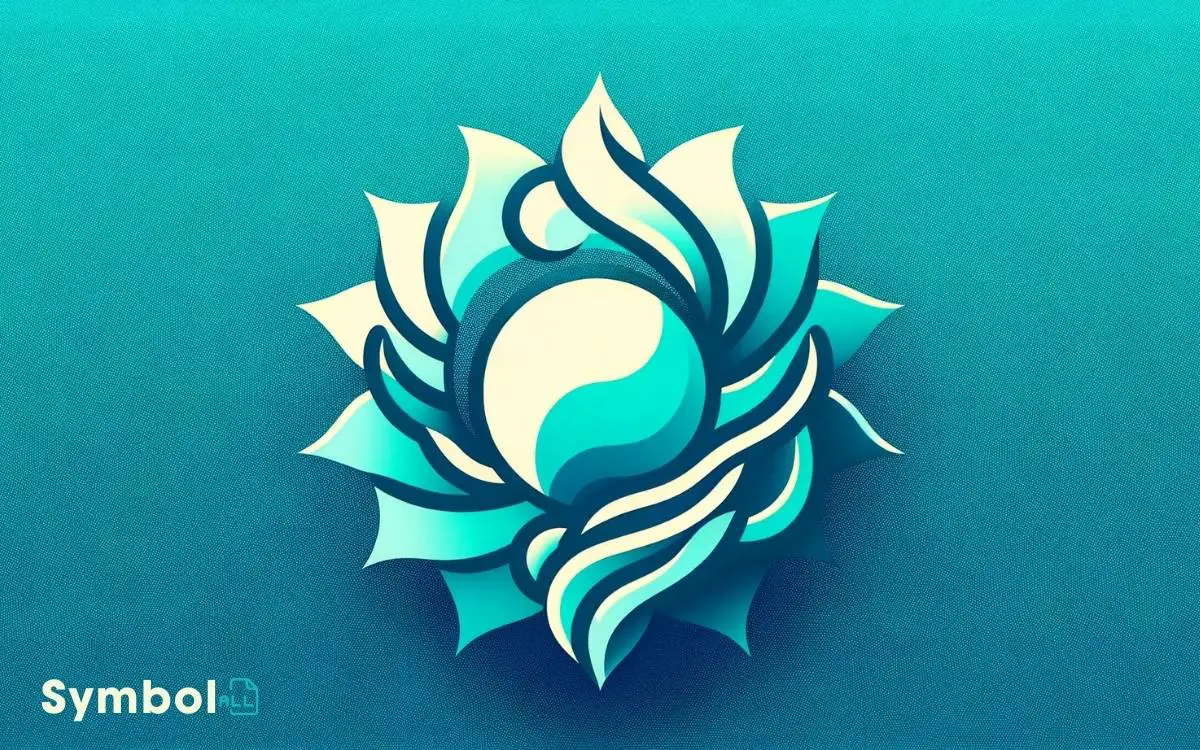What Does the Color Turquoise Symbolize? Protection!
You’ll discover turquoise carries a rich tapestry of meanings. It stands for protection, healing, and prosperity, seamlessly blending the calming energies of blue with the rejuvenating power of green.
This rare gem enhances artifacts and architecture, embodying human inclinations and diverse cultural beliefs across civilizations. It creates a state of calm, reduces stress, and encourages clear communication, enhancing emotional and spiritual balance.
Turquoise deeply connects with nature, representing the tranquility of water, the expanse of the sky, and the stability of the earth.
As a beacon of luck, health, and purity, its significance spans various cultures. It also serves as a protective talisman, revered in Native American, Ancient Egyptian, and Tibetan traditions.
Turquoise’s natural affinity with creativity boosts artistic expression, fostering innovative thinking. Exploring its depths reveals a profound harmony with nature and a pathway to inner peace.

Key Takeaway
Historical Significance
Throughout history, turquoise has served as a powerful symbol in various cultures, embodying concepts of protection, healing, and prosperity.
This vibrant hue, bridging the calm of blue and the growth energy of green, hasn’t only adorned artifacts and architectures but also signified important spiritual and philosophical ideals.
Its significance is deeply rooted in its rarity and the difficulty associated with its extraction, which historically added to its perceived value and mystical attributes.
Analyzing this, you’ll see turquoise as more than a color or a gemstone; it represents a complex interplay of cultural beliefs and the human inclination towards attributing meaning to the natural world.
This understanding underlines the color’s historical importance, transcending mere aesthetic appeal to encapsulate a rich tapestry of human experience and belief.
Cultural Interpretations
Delving into the cultural interpretations of turquoise reveals how different societies have imbued this color with varied, profound meanings that reflect their unique values and worldviews.
- Native American cultures see turquoise as a sacred stone, representing healing, protection, and a connection to the spiritual world.
- In the Middle East, it’s a symbol of purity and immortality, often used in architectural decoration to ward off evil.
- Tibetan traditions associate turquoise with luck, health, and spiritual well-being, embedding it in jewelry and religious artifacts.
- Ancient Egyptian societies valued it as a stone of gods, signifying power and status when worn or carried.
- In contemporary Western cultures, turquoise evokes a sense of calm and tranquility, often used in design and fashion to create a serene atmosphere.
This broad spectrum of interpretations showcases turquoise’s versatility and enduring significance across cultures.
Emotional Impact
The color turquoise wields a profound emotional impact, influencing feelings and mood in ways that are both subtle and significant.
As you observe or surround yourself with turquoise, you might find it evokes a sense of calmness and tranquility.
This color’s unique blend of blue and green harnesses the serenity of blue with the rejuvenation of green, fostering an environment of emotional balance and stability.
It’s particularly adept at reducing stress and creating a peaceful state of mind. Additionally, turquoise can also stimulate open and clear communication, encouraging the expression of thoughts and feelings.
By understanding its emotional influence, you can strategically incorporate turquoise into your life to cultivate a more harmonious and emotionally balanced atmosphere.
Connection to Nature
Turquoise’s strong connection to nature embodies the tranquil and rejuvenating spirit of the earth, offering you a tangible link to the serene and restorative energies of the natural world.
This unique color mirrors the vitality and harmony that nature provides, encouraging a deeper appreciation and understanding of our environment.
When you encounter turquoise, it’s as if you’re directly interacting with the elements of water and sky, both of which are essential to life on our planet.
Consider how turquoise represents:
- The clear, invigorating waters of a mountain stream
- The vast, open skies on a sunny day
- The vibrant life found in coral reefs
- The gentle strength of the earth’s minerals
- The soothing presence of lush, green foliage
Each aspect of turquoise’s representation in nature invites you to explore and cherish your connection with the natural world, fostering a sense of peace and balance within.
Symbol of Protection
As you explore the symbolism of turquoise, it’s essential to understand its role as a symbol of protection across various cultures and practices.
Ancient amulets and talismans crafted from turquoise were believed to ward off evil, a belief that underscores its protective energy in historical and contemporary spiritual practices.
This protective aspect isn’t only a proof of its enduring significance but also invites a deeper examination of how modern spiritual practices continue to embrace turquoise for its safeguarding properties.
Ancient Amulets and Talismans
Throughout history, cultures worldwide have revered turquoise as a powerful amulet or talisman, believed to offer protection against negative forces and bring good fortune to its wearer.
This belief isn’t unfounded; it’s rooted in the gemstone’s unique properties and historical significance.
- Durability: Turquoise’s robustness made it ideal for wear in ancient times, symbolizing strength.
- Color: Its vibrant hue resembles the sky and water, elements associated with life and purity.
- Accessibility: Unlike some gemstones, turquoise was accessible to various social classes, making its protective qualities available to many.
- Versatility: Crafted into various forms, from jewelry to ceremonial objects, its presence was pervasive.
- Historical Significance: Many cultures have documented the use of turquoise in their earliest records, underscoring its long-standing value and protection.
This analysis reveals why turquoise has been, and continues to be, a symbol of protection across different eras and societies.
Protective Energy in Cultures
Delving deeper into the domain of cultural symbolism, we find that the protective energy attributed to turquoise resonates across various societies, manifesting as a universal symbol of safeguarding and fortune. This protective quality of turquoise often finds its place in jewelry, amulets, and architectural designs, underscoring its enduring significance in human history. While turquoise embodies safety and protection, other colors, such as peach, hold distinct yet equally profound meanings. For instance, color peach symbolism explained often highlights its association with warmth, harmony, and emotional balance, making it a favored hue in art and interpersonal expressions.
Rhis connection is not a mere coincidence but a reflection of the deep-seated belief in turquoise’s power to protect and bless those who wear or use it.
| Culture | Symbolism of Turquoise |
|---|---|
| Native American | A talisman against harm, promoting health and good fortune. |
| Ancient Egyptian | Worn by pharaohs as a protective amulet against evil forces. |
| Tibetan | Considered a token of luck, health, and protection against evil spirits. |
Modern Spiritual Practices
In modern spiritual practices, turquoise continues to be revered as a symbol of protection, drawing from its historical roots to offer contemporary seekers a sense of security and well-being.
This vibrant color channels its protective energy in various ways:
- Warding off negative energies: Turquoise is believed to create a protective shield around the wearer.
- Promoting mental clarity: It helps in clearing the mind of fears and anxieties.
- Enhancing communication: Turquoise fosters honest and open communication, which is essential in building protective relationships.
- Supporting emotional balance: It aids in stabilizing mood swings, providing a serene mental state.
- Spiritual grounding: Turquoise is used in meditation to connect with the spiritual world, ensuring a protective barrier against spiritual harm.
Influence on Creativity
You’ve seen how turquoise acts as a symbol of protection, but its influence stretches further into the domain of creativity.
It’s believed that this color can greatly boost artistic inspiration, providing a mental space where ideas flow more freely.
Moreover, it enhances creative thinking, fostering an environment where innovative solutions aren’t just welcomed, but cultivated.
Boosting Artistic Inspiration
Turquoise has long been celebrated for its capacity to ignite artistic potential, offering a vibrant splash that can kindle the spark of creativity in artists and designers alike. This color’s influence on creativity is profound, affecting various aspects of the artistic process.
- Encourages risk-taking: Turquoise inspires you to experiment beyond conventional boundaries.
- Stimulates emotional expression: It helps convey complex emotions through art.
- Enhances visual perception: Turquoise sharpens the ability to see things in new ways.
- Promotes mental clarity: It clears the mind, allowing for focused creative thought.
- Fosters connection with nature: This color draws inspiration from the natural world, enriching creativity.
Analyzing turquoise’s role in boosting artistic inspiration reveals its power to transform ideas into tangible creations, making it a pivotal tool for anyone seeking to enhance their creative output.
Enhancing Creative Thinking
Building on its role in inspiring artistic expression, turquoise also significantly enhances creative thinking by fostering an environment where innovative ideas can flourish.
When you’re surrounded by turquoise, either through decor or attire, you’re subtly encouraged to break free from conventional thinking patterns.
This color’s association with clarity and calmness aids in reducing mental clutter, making it easier for you to access and explore new ideas. It’s not just about thinking outside the box; turquoise helps you redefine the box.
Conclusion
Fundamentally, turquoise isn’t just a color; it’s a voyage through history, culture, and emotion. Imagine it as the Earth seen from space, a blend of blue seas and green lands, symbolizing tranquility, protection, and creativity.
This color embodies the deep connection between our planet and its inherent beauty. Through its shades, you’re reminded of nature’s resilience and your own creative spirit.
Analyzing turquoise is like uncovering layers of meaning, each one revealing insights into our collective human experience.






